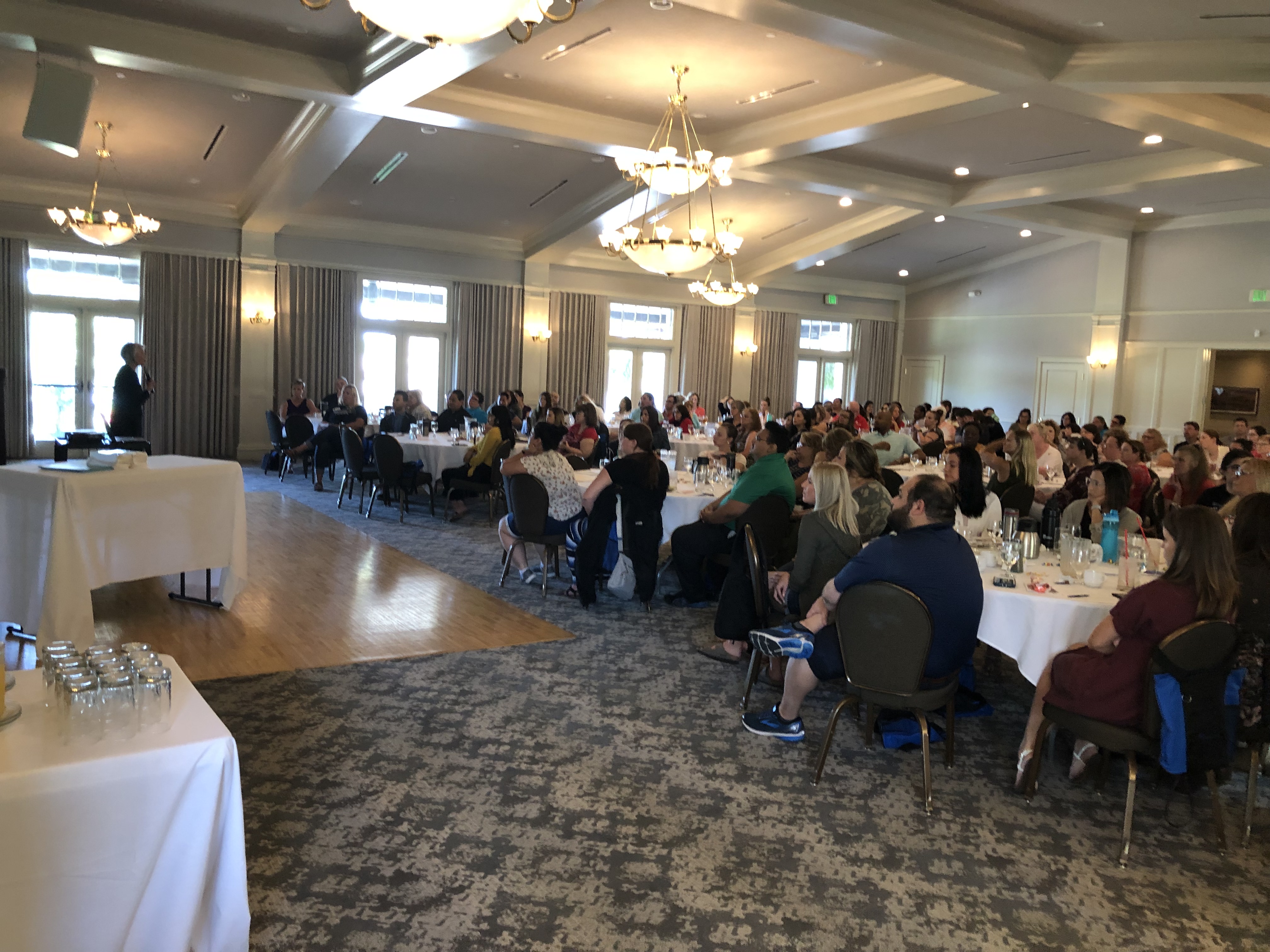 By Erica Peterson, MD, MPH, Internal Medicine and Pediatrics, Bluestem Health; Tami Frank, Partnership for Healthy Lincoln; and Karina Vargas, CLC, Bluestem Health
By Erica Peterson, MD, MPH, Internal Medicine and Pediatrics, Bluestem Health; Tami Frank, Partnership for Healthy Lincoln; and Karina Vargas, CLC, Bluestem Health
While the need to better support breastfeeding families in safety net clinics is well recognized, internal resources are often limited. Likewise, many community-based initiatives have difficulty engaging high- risk families who would benefit most from their efforts and supports. With funding from NACCHO’s initiative “Building a Breastfeeding Support Model for Community Health Centers”, the goal of the project’s cost-effective approach was to strengthen and leverage community partnerships, enhance internal systems, and provide ongoing training to all staff.
Challenge
Bluestem Health is a multidisciplinary Federally Qualified Health Center (FQHC) located in Lincoln, Nebraska that provides adult primary care, pediatrics, prenatal care, dental care, and integrated behavioral health services to a predominantly low-income and diverse population. While our county boasts high rates of breastfeeding initiation rates (83.3%), these rates drop off significantly by two months (46.6%). Many Bluestem patients face barriers in accessing services, including lack of transportation, underinsurance, and language and cultural barriers. This makes the development of an effective integrated approach to promote and support breastfeeding at Bluestem even more critical. Lincoln had several established community resources at the start of this grant—including Partnership for a Healthy Lincoln, supported by a the Centers for Disease Control and Prevention’s REACH grant; the Lincoln Community Breastfeeding Initiative, a coalition of community partners focused on breastfeeding support; the Community Breastfeeding Educators, which trained community outreach resources; and MilkWorks, a local community breastfeeding center. However, Bluestem Health had not been integrally involved in coordinating efforts with these potential partners and had not yet developed an internal process outlining their approach to breastfeeding for clients and employees. Bluestem also had not systematized distribution of breastfeeding handouts, maternal depression screenings, and referral processes. Many staff members and providers had never been specifically educated about basic breastfeeding knowledge.
Solution
 We first conducted surveys and focus groups and collected information about the resources in the community within Bluestem, and identified gaps in services. Then, we set our organizational process outlining our breastfeeding goals as an organization for both employees and clients. The employee process was designed in collaboration with Workwell, a local organization that assists employers in providing workplace lactation support. All pregnant employees now meet with our pediatric nurse and complete a Return to Work plan outlining plans for breastfeeding. We developed our own process for clients and outlined an internal workflow. As part of this procedure, handouts were designed or identified to be given out at specific prenatal visits and at the well-check visits in the first year of life. These handouts include a community resource guide developed in conjunction with our community partners, listing comprehensive updated information about available Certified Lactation Counselors (CLCs) and available breastfeeding support resources. A system was also established to refer prenatal and postpartum families to one of our interpreters, who are trained as community breastfeeding educators (CBC) by Milkworks.
We first conducted surveys and focus groups and collected information about the resources in the community within Bluestem, and identified gaps in services. Then, we set our organizational process outlining our breastfeeding goals as an organization for both employees and clients. The employee process was designed in collaboration with Workwell, a local organization that assists employers in providing workplace lactation support. All pregnant employees now meet with our pediatric nurse and complete a Return to Work plan outlining plans for breastfeeding. We developed our own process for clients and outlined an internal workflow. As part of this procedure, handouts were designed or identified to be given out at specific prenatal visits and at the well-check visits in the first year of life. These handouts include a community resource guide developed in conjunction with our community partners, listing comprehensive updated information about available Certified Lactation Counselors (CLCs) and available breastfeeding support resources. A system was also established to refer prenatal and postpartum families to one of our interpreters, who are trained as community breastfeeding educators (CBC) by Milkworks.
We now attend the scheduled LCBI meetings and participate in a city-wide effort to improve screening for maternal depression. In collaboration with Partnership for Healthy Lincoln, we worked with pediatric and obstetrician (OB) offices across town to standardize maternal postpartum depression screening at the two-week well check. We helped to develop a process for positive screens to be communicated back to OB offices and referred to mental health resources. This is also a critical period where new mothers may need breastfeeding assistance and can now be immediately referred to lactation support. In addition, because transportation was a barrier for many of our clients, we tested some walk-in breastfeeding support and pump clinics at one of our locations. In partnership with Milkworks, we trained our entire staff on the benefits and history of breastfeeding and provided additional in-depth training for our healthcare providers on assisting clients with common breastfeeding problems.
Results
While we recognize the need and opportunity to continue to grow our breastfeeding support efforts, we have already seen several positive outcomes from our initial activities over the past nine months of the grant period. We increased organizational capacity by increasing breastfeeding knowledge, with 68% of the staff reported learning something new at our general training, and we saw a 10% increase in those who believe that breastfeeding is the best source of nutrition for most infants. Likewise, our providers demonstrated a significant increase in clinical knowledge. For example, before the training, only 57% could correctly identify likely drugs responsible for low milk supply. After the training, this number rose to 91%. We have numerous stories of less quantifiable improvements since implementing our workflow and educational interventions. For example, one teen mom presented for her infant’s newborn visit complaining of breast pain. In the past, women with concerns about breastfeeding met with inconsistent, variable support and had difficulty connecting with Milkworks due to the barriers outlined above. Now with these organizational changes, this mom was educated about support services available. She was immediately referred to our CBE/CLC, who assisted with latching. Our CBE/CLC worked directly through our newly strengthened connections at Milkworks to facilitate access to a breast pump and appropriate pump flanges. The mom was also effectively referred and connected to a teen breastfeeding group.
Lessons Learned
Leveraging community resources, strengthening partnerships, and organizing systems through an internal continuity of care lens is a potentially cost-effective approach to enhancing supports for breastfeeding families in a relatively short period of time. While we could never have developed all the materials using our internal resources alone, we worked with our partners to develop a scaffold that best integrates our systems with resources in the community. Our path was filled with smaller lessons as well. An organizational “policy” proved to be cumbersome, so a breastfeeding support process served to set our compass in terms of breastfeeding goals. This resulted in our ability to find a process that best met our needs in a more expedient way. Initially, we met some internal resistance when discussing new breastfeeding supports, highlighting the need for a common process and education of all staff. While there is still significant opportunity for further improvements, these activities were achievable in a relatively short period of time and made a sustainable, real impact for our clinic and our patients.
For more information, contact Karina Vargas at [email protected].



